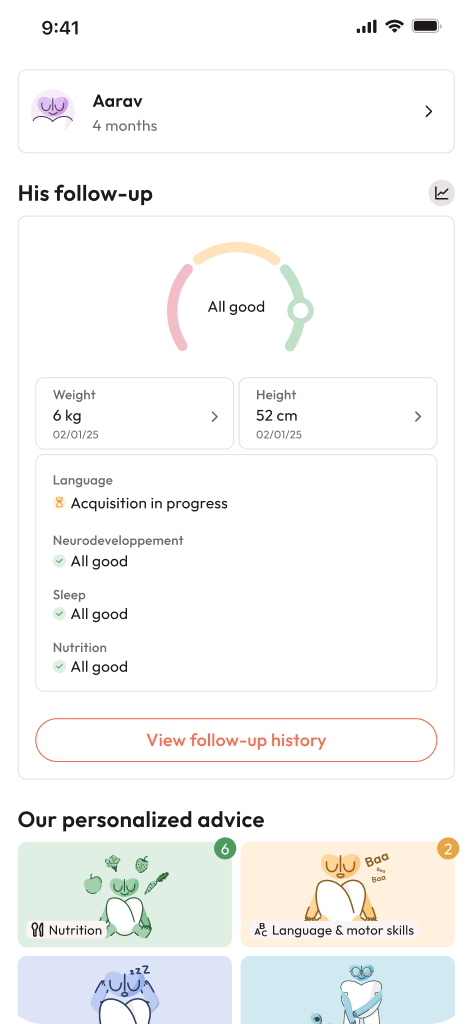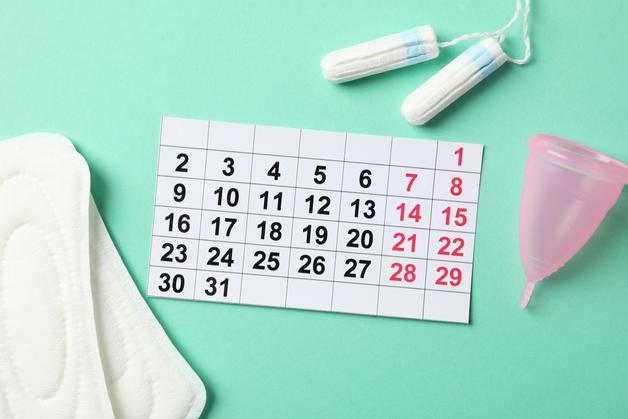Rib pain during pregnancy – for many parents-to-be, this can be an unexpected guest, making its presence felt just when you thought you’d adjusted to the surprises of the second or third trimester. Imagine, you’re settling down after a long day, only to be met with an ache right under your rib cage, a sensation that oscillates between a dull, persistent throb and a sudden, sharp nudge. What causes this? Could it be something serious? Or is it simply your baby stretching out with their tiny limbs? These questions are common, and the answers, while sometimes straightforward, can also hide behind the intricate interplay of anatomy, hormones, and your body’s incredible adaptability. Parents often grapple with doubts: how normal is this pain? What can bring relief, and when is it time to reach out to a doctor? Let’s unpack the physiological, mechanical, and sometimes surprising causes of rib pain during pregnancy, and discover practical pathways to reclaim comfort and peace of mind.
Why does rib pain during pregnancy happen?
Rib pain during pregnancy is not just a fleeting annoyance – it’s a real physical response to the radical adaptation your body orchestrates. As the uterus expands, it gently – yet inevitably – presses upwards, coaxing your abdominal organs and even the diaphragm to share space in new configurations. Now, picture the rib cage, strong yet elastic, suddenly stretched and compressed by this upward tide. For many, this feels like a general ache, a sense of fullness or even costal cartilage pain (the area where ribs meet cartilage at the front of the chest).
But it doesn’t stop with anatomical reshuffling. Enter hormones, especially relaxin – like a silent architect, it softens the ligaments not just in the pelvis but across the thoracic area too, nudging ribs to become more mobile. This mobility is necessary for childbirth but can make ribs more susceptible to discomfort or even sharp episodes of pain. Adding to this symphony, the diaphragm – your essential breathing muscle – finds itself somewhat crowded, resulting in muscle fatigue that’s occasionally registered as pain rippling just under the ribs.
The baby, ever active, becomes a participant too. Strong kicks, twisting, or stretches can deliver a jolt (especially on the right side, where the liver sits). Such movements, while thrilling to feel, sometimes reverberate directly beneath the ribs. The kicker? All these are standard, healthy progressions in most pregnancies – but attention is needed if rib pain during pregnancy intensifies, persists, or is accompanied by alarming symptoms like fever, swelling, shortness of breath, or changes in your baby’s activity.
The roots: posture, muscles, and more
The causes of rib pain during pregnancy reveal a fascinating array of contributors beyond just a growing belly. Here are the most relevant aspects:
- Mechanical pressure: The swelling uterus and your growing baby push organs upward, often resulting in an overwhelming sense of tightness or sharp pains – especially towards the later stages.
- Hormonal actions: Increased relaxin ensures pelvic flexibility but loosens rib ligaments, making the chest wall both more forgiving and, paradoxically, more tender.
- Postural shifts: As pregnancy evolves, your center of gravity moves – the back arches, shoulders often round forward, and the rib cage may be subtly rotated or lifted, creating tension in both intercostal muscles (those little bands nestled between each rib) and ligaments.
- Intercostal muscle strain and nerve compression: Deep breaths might set off a sting or burning, especially if strained muscles or compressed nerves along the rib cage get triggered.
- Digestive changes: With organs rearranged, acid reflux and heartburn are notorious culprits, sometimes causing pain or pressure beneath the ribs after meals. Gallstones – more common in pregnancy – can bring acute pain just under the right ribs, especially post fatty meals.
- Baby’s moves and position: Late pregnancy, long spells of sitting, or lying on your back can prompt discomfort if the baby settles up against the costal margin.
- Medical conditions: Rarely, persistent rib pain points to conditions like preeclampsia, infection, or direct injury, mandating immediate check-up.
When does rib pain during pregnancy usually start?
You may wonder: will rib pain during pregnancy strike early on? Interestingly, the first trimester is usually quiet on this front – but as the second trimester unfolds, most parents notice the first hints of discomfort. The intensity and frequency tend to escalate towards the third trimester, when the uterus reaches its zenith and the baby becomes an energetic tenant. In this phase, maximum abdominal stretch and rapid baby growth converge, making rib pain not just common but almost expected.
Rib pain during pregnancy: symptoms, types, and how to recognise them
Not every pain is built alike. Rib pain during pregnancy can announce itself in several guises:
- Sharp, stabbing jolts: Often linked to sudden movements or robust baby kicks.
- Dull, lingering aches: Usually the domain of muscle strain or posture-induced tension. These tend to worsen with certain motions or slumping.
- Radiating patterns: Some discomfort might travel, snaking its way from the ribs toward the back, shoulders, or even into the belly. Nerve compression or swelling can set off these sensations.
Right-sided rib pain takes the stage more frequently, often due to the baby’s position or subtle pressure on the underlying liver and gallbladder. Left-sided pain, while less common, might be attributed to muscular stretching or how the baby has positioned themselves. Severity matters: persistent, severe, or radiating pain – especially if worsened by breathing, unresponsive to rest, or coupled with worrisome symptoms like fever or reduced baby movement – should never be brushed aside.
What can make rib pain during pregnancy worse? Aggravating and risk factors
Several situations tip the balance towards more discomfort:
- Poor posture – prolonged slouching or awkward seating.
- Limited core muscle strength before or during pregnancy.
- Weight gain and fluid retention increasing rib pressure.
- Hormonal surges, notably of relaxin.
- Fetal position, especially if baby’s head or feet are tucked under the ribs.
- Digestive woes like heartburn, or gallstone-related discomfort.
How professionals approach diagnosis
You’re probably thinking – how to tell run-of-the-mill discomfort apart from something needing expert care? Diagnosis of rib pain during pregnancy leans heavily on attentive listening: details of onset, precise location, and any triggers. Posture is evaluated, muscles are gently palpated, and vital signs checked (especially blood pressure for signs of preeclampsia). Occasionally, additional tests – from basic bloodwork to rare ultrasounds or imaging – are needed to clarify the situation.
The central aim here? To differentiate harmless, typical rib pain from more serious issues that might require urgent treatment. Location, response to movement or rest, and associated signals (like fever, new swelling, or breathing difficulty) are key clues.
Effective strategies: relieving rib pain during pregnancy
Relief is possible – and often, gentle everyday changes make a tangible difference. Consider these options, always discussed with your care provider:
- Gentle stretching: Raising one arm overhead and stretching sideways can create space and relieve pressure.
- Diaphragmatic breathing: Deep, slow breaths with hands on the abdomen can relax constricted muscles and enhance oxygen flow.
- Frequent position changes: Don’t sit still too long. Lying down? Elevate the knees using a pillow.
- Pregnancy or exercise ball: Rocking gently can release tension and improve pelvic mobility.
- Supportive devices: Maternity belts or belly bands lighten abdominal load, easing thoracic stress.
- Perfect your posture: Upright, neutral stances reduce slumping and costal pressure.
- Warm or cold compresses: Short, safe applications can bring relief (never too hot, never on the belly, always brief).
- Gentle massage: Targeted work by skilled pros or cautious self-massage along the ribs and lower back.
- Clothing choices: Supportive bras, loose-fitting apparel, and smart fabric choices prevent additional restriction.
- Prioritise rest: Use pillows for night support, try side-sleeping, and take regular time-outs.
- Exercise, but make it gentle: Walking, prenatal yoga, or light stretching — these not only enhance flexibility but also prevent muscle tension.
- Tame digestive triggers: Small, frequent, fiber-rich meals and solid hydration help.
- Medication — rarely, and only after consultation: Paracetamol (acetaminophen) may bring short-term relief, but always confirm with your provider.
- Complementary therapies: Osteopathy, chiropractic care, and physiotherapy, but only with experts in pregnancy care.
When expert hands are needed: professional therapies
If discomfort persists or self-care measures reach their limit, specialist care enters the stage. Osteopathy targets tension release in the diaphragm and rib cage with gentle hands-on therapy. Chiropractic support can realign strained joints or compressed nerves, while physical therapy harnesses posture training and supervised movements to restore comfort. Always choose practitioners fluent in the nuances of pregnancy – safety first, always.
When medication and intervention are considered
There are moments when rib pain during pregnancy signals the need for medical intervention. Persistent, escalating pain, or signs of infection, preeclampsia, gallstones, or trauma warrant prompt assessment and targeted treatment. Antibiotics, blood pressure management, or other therapies might be needed – always weighed carefully for pregnancy safety.
A golden rule: never self-medicate – advice from your health provider is your safest path.
Everyday impact: how rib pain during pregnancy shapes routine and well-being
The truth? Rib pain during pregnancy – especially if persistent – can put a damper on everyday joys and chores alike. Simple acts like bending, sitting, or reaching may turn unexpectedly uncomfortable. What helps? Proactive changes: posture checks, regular breaks, pillow forts at bedtime, supportive outfits, and gentle exercise routines. Night discomfort? Side-sleeping and body pillows can be small game-changers.
Emotional health deserves space here too. Communicate openly with your partner and trusted caregivers. Deep breathing, mindfulness, and reassurances that every body navigates pregnancy differently can provide calm. Understanding the “why” behind your symptoms empowers you to manage them with confidence.
What other discomforts can come along for the ride?
Where there’s rib pain during pregnancy, other aches sometimes tag along:
- Lower back pain, fanned by a shifting posture and abdominal weight.
- Sciatica – sharp or aching discomfort tracking from buttocks down the leg.
- Pelvic heaviness or pain, even extending toward the coccyx (tailbone).
- Digestive bumps: bloating, acid reflux, sometimes constipation.
- Braxton-Hicks contractions (practice tightenings) as pregnancy progresses.
- Regular, painful contractions before 37 weeks – a warning sign for preterm labour demanding immediate review.
Should rib pain be coupled with severe, persistent, or spreading discomfort, new swelling, difficulty breathing, or reduced fetal movements, contacting a healthcare professional is always the wisest move.
Prevention: staying a step ahead
Is prevention possible? While some rib pain during pregnancy is par for the course, these steps can minimise intensity:
- Scheduling an osteopathic check around the 12th week – helps prepare the rib cage and diaphragm.
- Cultivating ergonomic postures every day. Support aids: pillows, balls, or belts, as needed.
- Gentle, daily stretches and deep breathing for muscle elasticity.
- Regular, mild activity – be it walking, swimming, or prenatal yoga.
- Eating in moderation: small, fiber-rich meals, plenty of water – fends off digestive discomfort.
- Quick to seek advice – when in doubt or facing new, unexplained pain.
Remember, every pregnancy is unique. The best solutions adapt to your individual rhythms and comfort.
Key takeaways
- Rib pain during pregnancy is a typical experience, especially in the second and third trimesters, closely tied to normal mechanical, hormonal, and postural changes.
- Most discomfort results from the uterus pressing upward, hormonal ligament relaxation, baby’s position, and muscle tension in the costal region.
- Relief is possible: stretches, diaphragmatic breathing, supportive wear, and gentle exercise have shown real benefits.
- Professional therapies – like osteopathy or chiropractic care – are valuable when delivered by experienced pregnancy practitioners.
- Never ignore severe, persistent, or unusual pain – especially if coupled with fever, shortness of breath, swelling, unexplained bleeding, or changes in fetal movement.
- Support, education, and early communication with your caregivers go hand in hand for a better pregnancy experience.
- For more support and tailored advice, you can download the application Heloa for personalised health guidance and free health questionnaires for your child.
Questions Parents Ask
Can rib pain in early pregnancy indicate something serious?
Usually, rib pain during pregnancy is far more common in later trimesters, when the uterus expands upward. However, if you feel rib discomfort early on, it’s generally due to your body starting to adapt – muscles and ligaments are already getting the message to make space. If the pain is mild, fades quickly, and doesn’t come with other symptoms, there’s rarely cause for worry. But should the pain become constant, severe, or come with fever, strong nausea, chest pain, or breathing issues, reaching out to your doctor is wise to rule out anything more urgent.
How can I tell if rib pain during pregnancy is coming from the baby or something else?
If rib pain strikes just after a strong kick or twist, feels abrupt, and then fades, your active baby is likely the reason. This discomfort tends to be brief and linked to movement. On the other hand, pain that persists, gets worse regardless of your position, or radiates toward your back or shoulder may be due to muscle or nerve reasons – not just baby’s antics. When in doubt, it’s useful to discuss these patterns with your healthcare provider, who can help identify the cause and offer actionable advice.
Is it normal for rib pain to be felt on just one side?
Absolutely – rib pain during pregnancy often shows up more on the right, given how the expanding uterus nudges against the liver and, sometimes, the baby finds this spot most appealing. The left side is less frequently affected, and usually this is due to baby’s varied positions or natural muscle stretching. If discomfort is mild to moderate, comes and goes with movement, and eases when you change position or rest, it’s typically nothing worrisome. But persistent, sharp, or severe pain – especially with swelling, breathing trouble, or other unusual symptoms – should always prompt a check with your provider.









